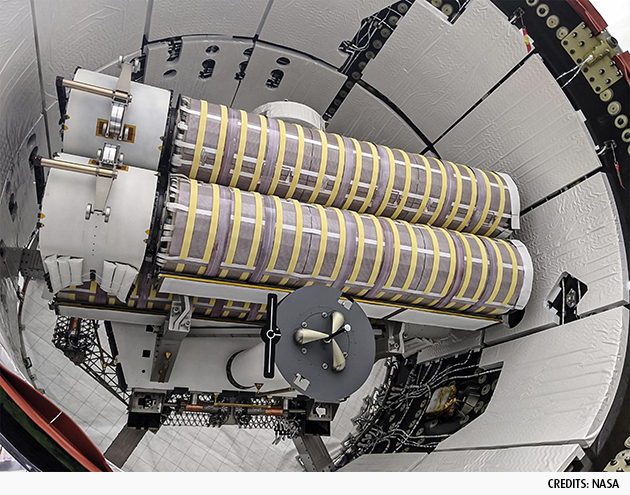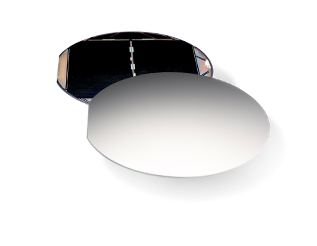Powering up space stations with germanium-based solar cells
Six next-gen roll-out solar arrays (ROSAs). That’s what’s needed to help ensure the International Space Station (ISS) can support continued operations through 2030. The secret ingredient? Multi-junction solar cells based on Umicore’s germanium substrates. These enable more efficient energy conversion, protect better against space radiation and have a lower total cost. No wonder NASA will equip the Gateway, a future outpost orbiting the moon, with a similar solution.

New operations, new power demands
The ISS is becoming increasingly versatile. Besides the numerous research and science investigations that are conducted there every day, the station serves as a springboard for NASA’s Artemis missions to the moon and has opened its doors for business and commercial activities, including private astronaut missions. This means that the ISS needs a reliable power supply. The problem: while the demand for energy increases, the silicon-based solar arrays that currently power the orbiting outpost show signs of degrading, which is to be expected after up to 20 years of service. So, NASA decided to upgrade six of the eight existing power channels with new roll-out solar arrays or ROSAs.
Germanium lives up to the test
Compared to the old generation of solar arrays, the new ROSAs offer great advantages:
- Because they are smaller and can be rolled up, it’s easier and less costly to launch them into space.
- The germanium-based solar cells convert up to twice as much light into electricity as their silicon-based counterparts.
- Since germanium is more resistant to damaging cosmic radiation than silicon, the solar cells’ lifespan can be extended from 15 to 20 years.
“The main difference is that the solar cells are now germanium based instead of silicon based”, explains Bendix De Meulemeester, business development director at Umicore Electro-Optic Materials. “Whereas silicon is optimised to convert one specific part of the light spectrum into electricity, germanium allows for triple-junction cells. Each junction converts a different portion of the light spectrum into electricity, so overall conversion efficiency is a lot higher.”
“Energy efficient, radiation resistant and cost effective: the advantages of germanium-based solar cells in a nutshell.”

25+ years of innovations
The first new ROSA with germanium-based solar cells was deployed on top of one of the existing ISS arrays in June 2021. The others will follow shortly to increase the overall power capacity to 215 kW. Using germanium to power space applications, however, isn’t new. “We’ve been pioneering with this technology for over 25 years”, says Bendix De Meulemeester. “The Iridium satellite constellation – operational since 1998 – was one of our first projects. But the technology has evolved greatly over time. For example, we started with double-junction solar cells and we’re now working on quadruple-junction solar cells, further boosting conversion efficiency. And there are plenty of new developments to come.”
Sustainability first
As beneficial as germanium may be in space, the sourcing of the material is often the subject of environmental discussions. Bendix De Meulemeester: “That’s the reason why we focus on recycled germanium. It has an 95%-smaller footprint than germanium from certain other sources. But our main goal is to minimise the need for germanium in space applications. We are developing a technique to create a 10-micron-thick layer of germanium on a ‘mother wafer’, which can then be separated and reused – leaving just this thin layer of germanium in space with all needed characteristics. Material use efficiency is a top priority at Umicore.”
“The less germanium we need in space, the better. And what we do need is the result of recycling, when possible.”
To Mars and beyond
The next iconic project is already well underway. The same germanium solar cell technology will power the Lunar Orbital Platform-Gateway (LOP-G), more commonly known as the Gateway. This cosmic outpost will play a major part in NASA’s Artemis program from 2024 onwards. Astronauts will learn how to survive in deep space and eventually the station will serve as a refuelling hub for long-term missions to Mars and beyond. “We’re very proud to be a part of these exploration missions and look forward to contributing to a better understanding of our solar system”, concludes Bendix De Meulemeester.
